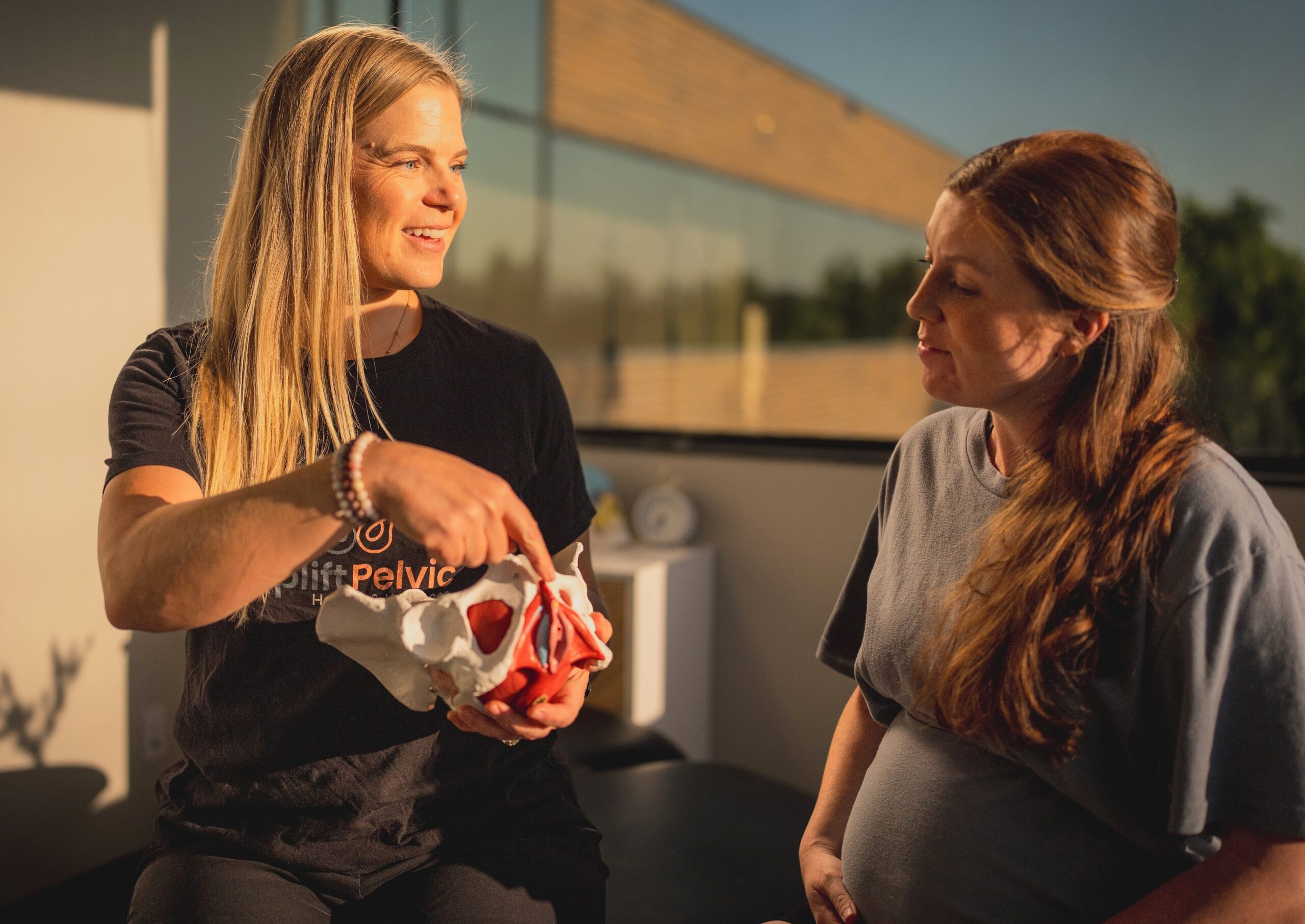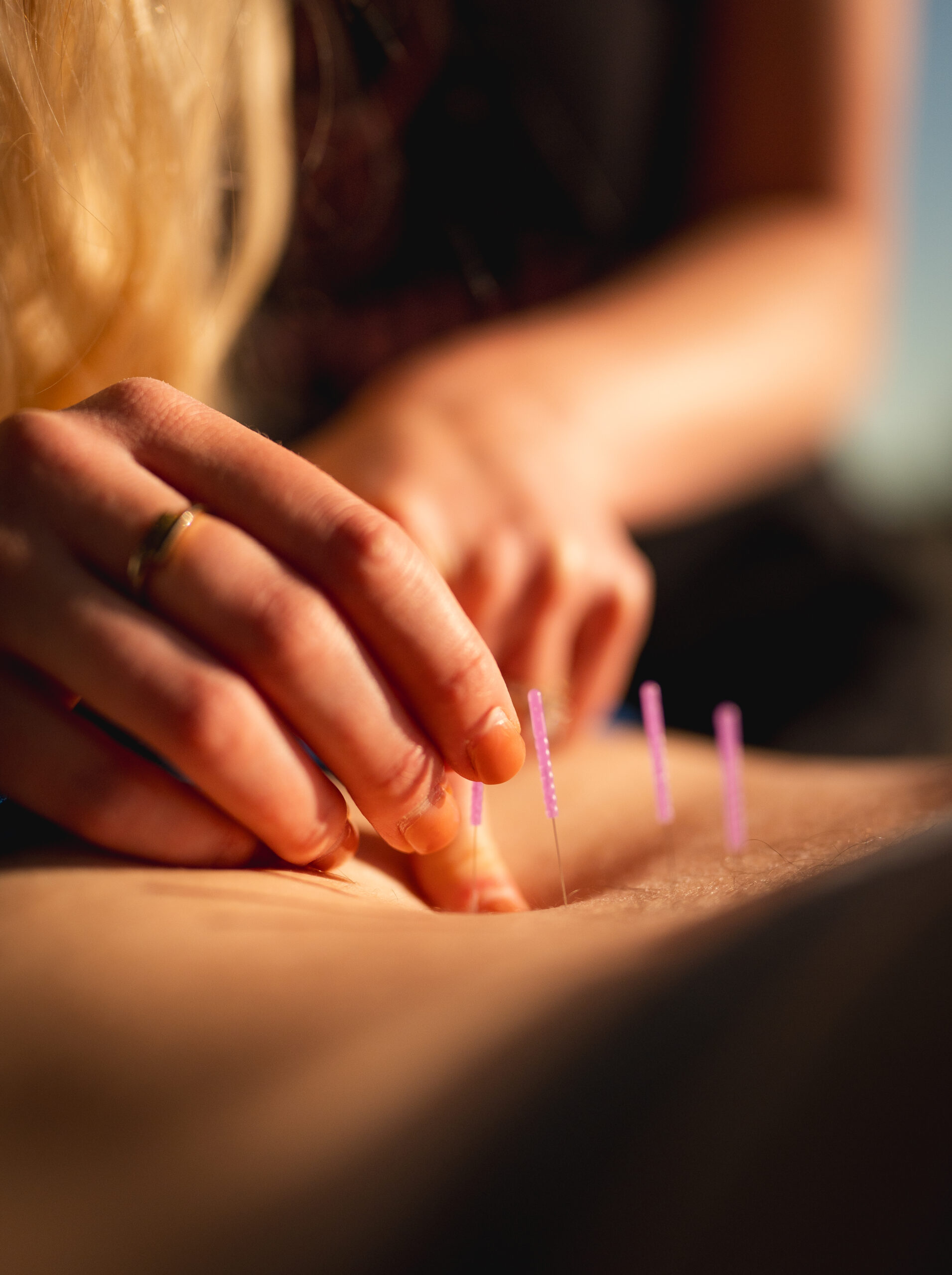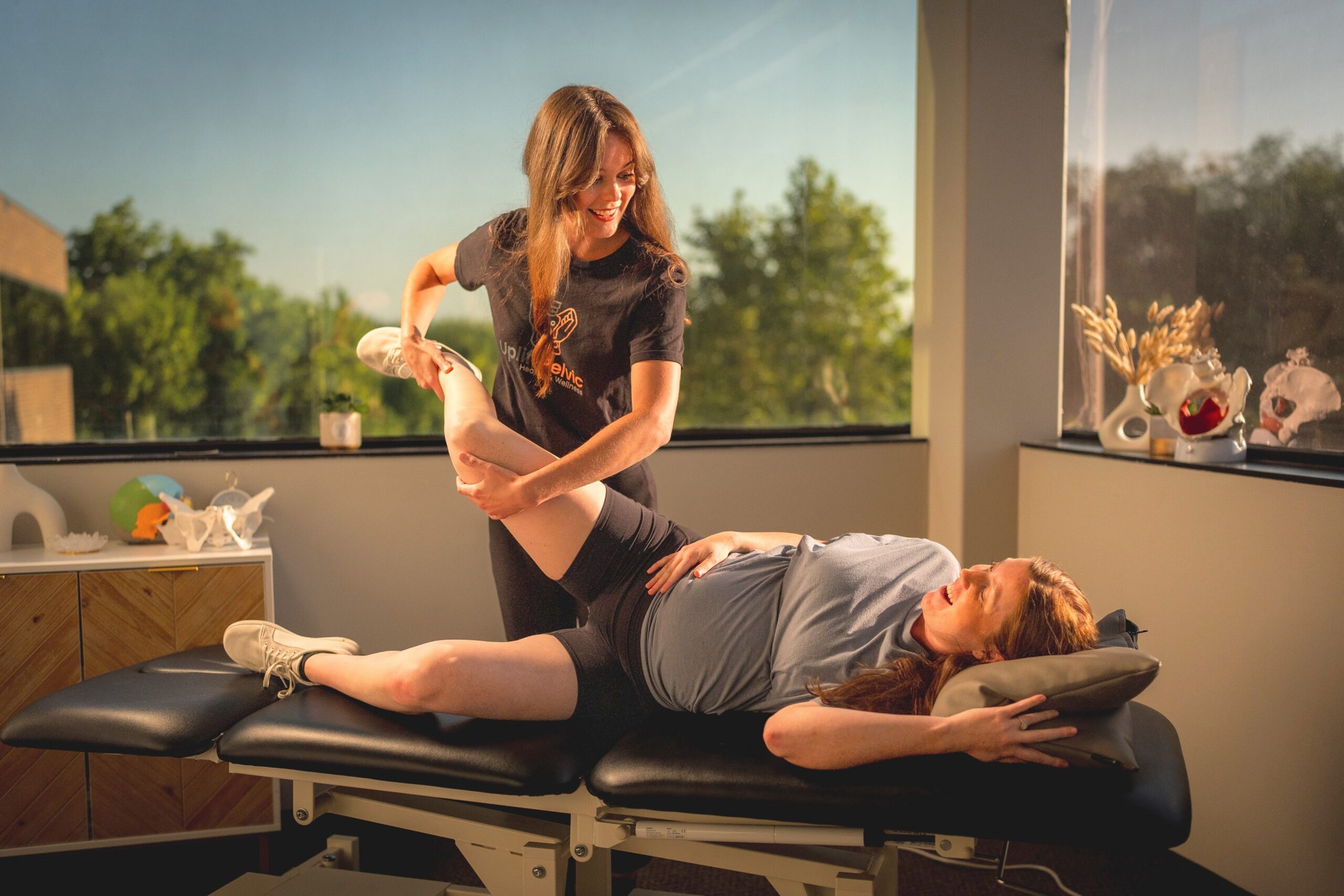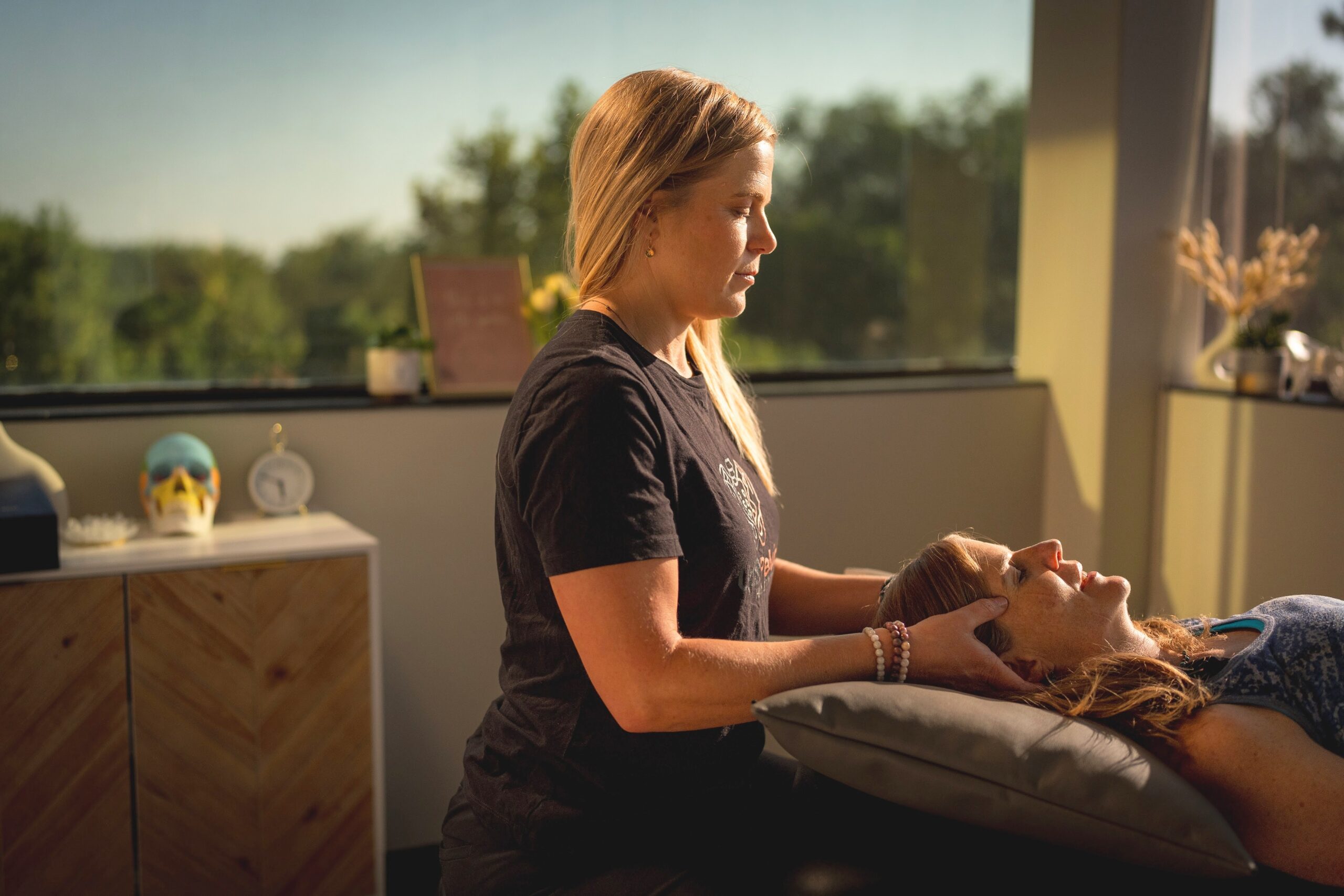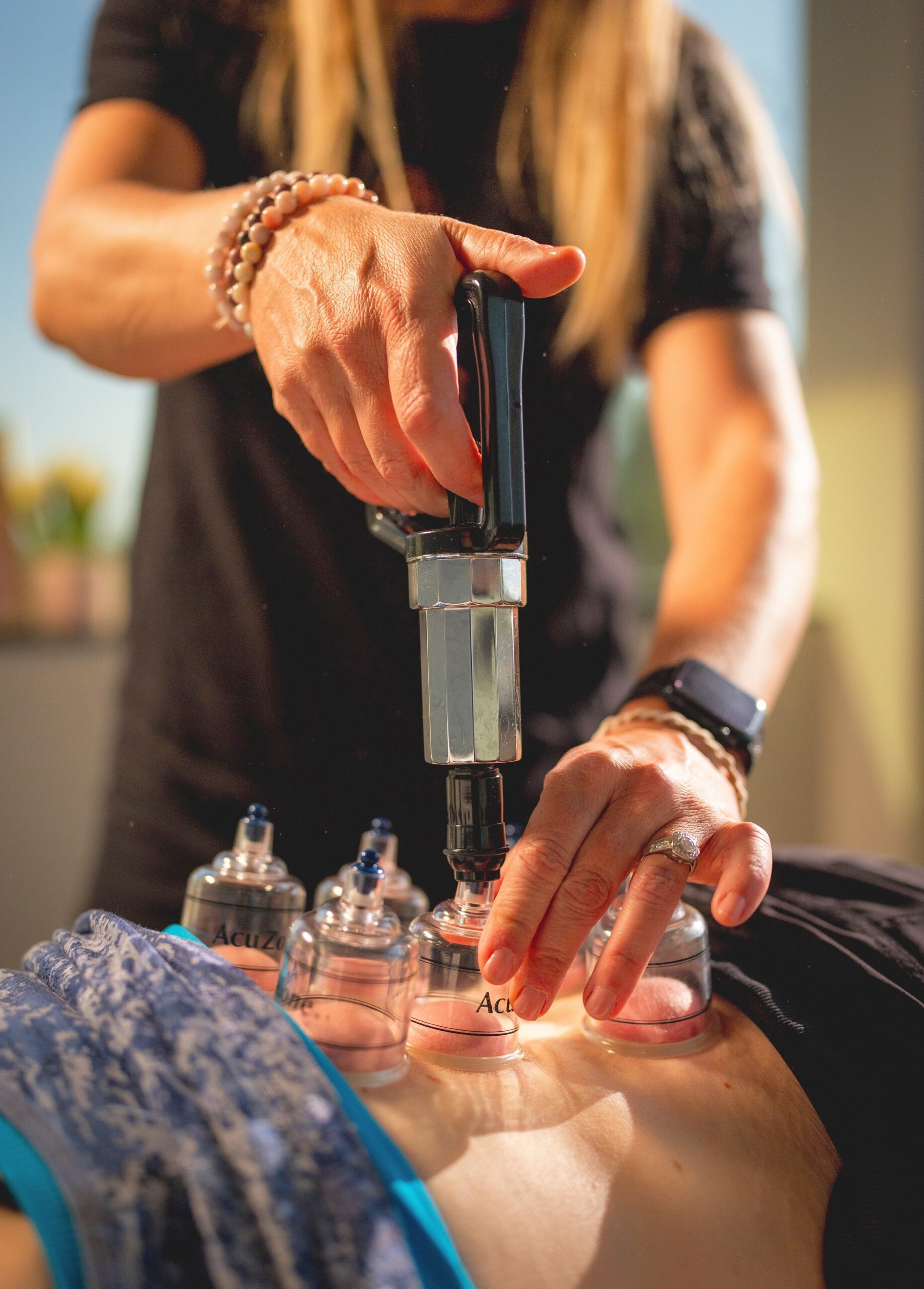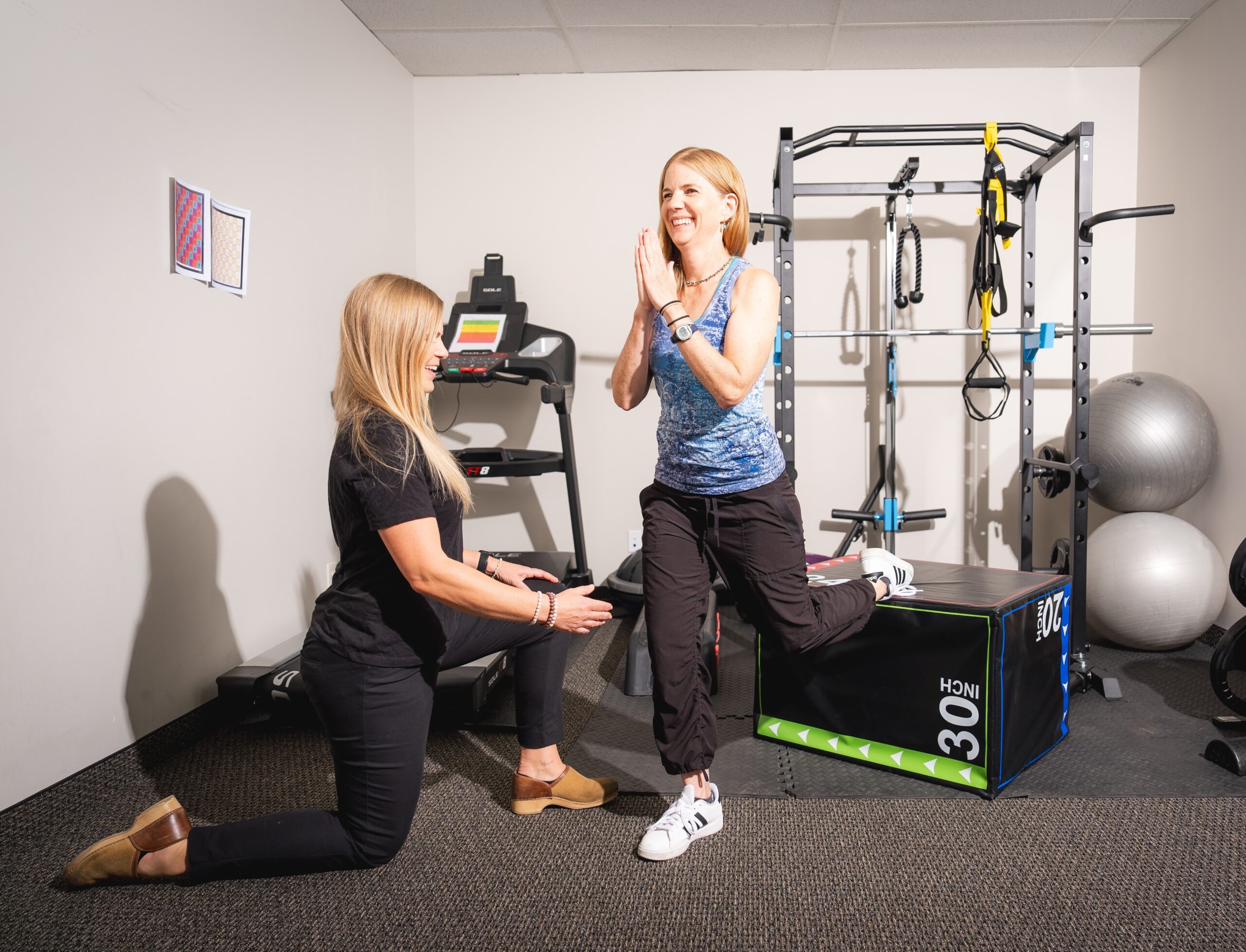Services & Treatments
At Uplift, each session is tailored to you. Depending on your goals and what your body needs most, our therapists can use a variety of treatments—such as manual therapy, dry needling, movement assessments and retraining, or visceral mobilization—in your regular appointments. Rather than taking a one-size-fits-all approach, we customize every visit so you receive the right blend of techniques at the right time, ensuring steady progress toward healing, strength, and maintaining long-term pelvic health.
Personalized Home Exercise Plans
Your healing doesn’t stop when you leave the clinic. We create personalized exercise plans to fit your goals, daily life, and body’s needs.
We’ll teach you how to integrate pelvic floor, core, and full-body functional exercises into your daily routines so it’s sustainable, not overwhelming.
Our goal: to help you reconnect with your body, move with confidence, and feel good in your daily activities, whether it’s with workouts or chasing after your kids.
Manual Internal Therapy
Manual internal therapy involves gentle, hands-on techniques to assess and treat the pelvic floor muscles vaginally or rectally.
This work helps release muscle tension, improve coordination, reduce pain, and restore comfort — especially for issues like pain with sex, leakage, constipation, or postpartum recovery.
Our approach is always respectful, comfortable, and fully guided by your consent. You’re in control every step of the way.
Read more about this treatment in our blog: What Is Internal Manual Pelvic Floor Therapy?
Dry Needling
Dry needling is a treatment that targets trigger points or “knots” within the muscles to release tension, improve blood flow, and calm overactive nerves. For pelvic floor care, it can help reduce pain, improve mobility, and enhance muscle coordination — whether it’s for hip, back, or pelvic tightness.
Our therapists use dry needling carefully and precisely, often combining it with breathwork, manual therapy, and movement to maximize results.
Visceral Mobilization
Your organs (like your bladder, uterus, and GI tract) are meant to move freely. Sometimes, tension, scar tissue, or restriction can limit that motion, leading to pain, bloating, or digestive issues.
Visceral mobilization uses gentle, specific manual techniques to improve mobility and alignment of these organs. It can enhance digestion, reduce pelvic pain, and support bladder and bowel function.
This treatment can help with:
- Scar pain post-surgery or injury
- Pelvic or abdominal pain
- Constipation or other GI issues
- Other chronic pain
Birth Preparation
Birth preparation is one of the most empowering things you can do during pregnancy.
Our pelvic floor physical therapists help you understand your body, prepare your muscles for delivery, and learn relaxation, breathing, pushing and posture techniques to support a smoother, more confident birth experience.
Birth prep services also help reduce the risk of tearing through practices like perineal massage.
We cannot recommend pelvic PT for birth preparation enough! Find out more about why we recommend it here:
Blog: Why Pelvic Floor PT During Pregnancy is Just as Important as Postpartum
Craniosacral Therapy
Craniosacral therapy is a gentle hands-on method that focuses on the body’s natural rhythm and the connection between the head, spine, and pelvis. It helps calm the nervous system, release tension, and support healing from the inside out.
Many patients describe it as deeply relaxing and grounding, a great complement for those experiencing stress, pain, or trauma in the pelvic region.
Cupping
Cupping is a gentle therapy that uses suction cups to create negative pressure on the skin.
This technique helps release tension in the muscles and fascia, promote blood flow, and support your body’s natural healing processes.
At Uplift, we often use cupping as part of a full-body approach to pelvic health — especially when tightness, restriction, or discomfort in surrounding areas like the hips, low back, or abdomen contribute to pelvic floor symptoms.
Cupping can be beneficial for:
-
Muscle tension in the hips, glutes, and low back
-
Abdominal tightness or bloating
-
Scar tissue from C-section or other surgeries
-
Poor circulation or fascial restriction
-
Pain related to posture or pelvic alignment
Functional Movement Assessments
Your pelvic floor doesn’t work in isolation. It’s part of a larger system that includes your hips, core, breath, and more. Your pelvic floor impacts how you move – and how you move impacts it.
Through functional movement assessments, we see how your body moves as a whole to identify areas of compensation, weakness, or imbalance. And we don’t just do this once – we believe in reassessing throughout your care with us to make sure we are going in the right direction with your exercises, and to get your feedback on how your body is feeling.
This helps us tailor and adjust your exercise plan to support how you move every day, whether that’s lifting, running, yoga, or simply playing with your kids.
Services
Our Highly Successful RRR Method
After we assess your specific issue and make a plan to return you to your preferred activity, we will implement the tried and true RRR Method.
The RRR method works in three phases: Restore, Retrain, and Reclaim
🧘 Restore: This is what we call hitting a reset button on your body. We have to lengthen/restore the tissue to allow it to relax and incorporate breath. Adding length and mobility to the muscles sets you up for long-term success (visits 1-4).
💪 Retrain: We have to connect the mind to the muscle and re-educate the muscle to fire the correct way (visits 5-8).
🏃♀️ Reclaim: We look at functional movements and return you back to your preferred activities without any difficulty. The Reclaim Phase allows you to not only be pain-free/have symptoms go away for a short time, but to have pain stay away so you don’t ever have to experience this again! (visits 9-12).



